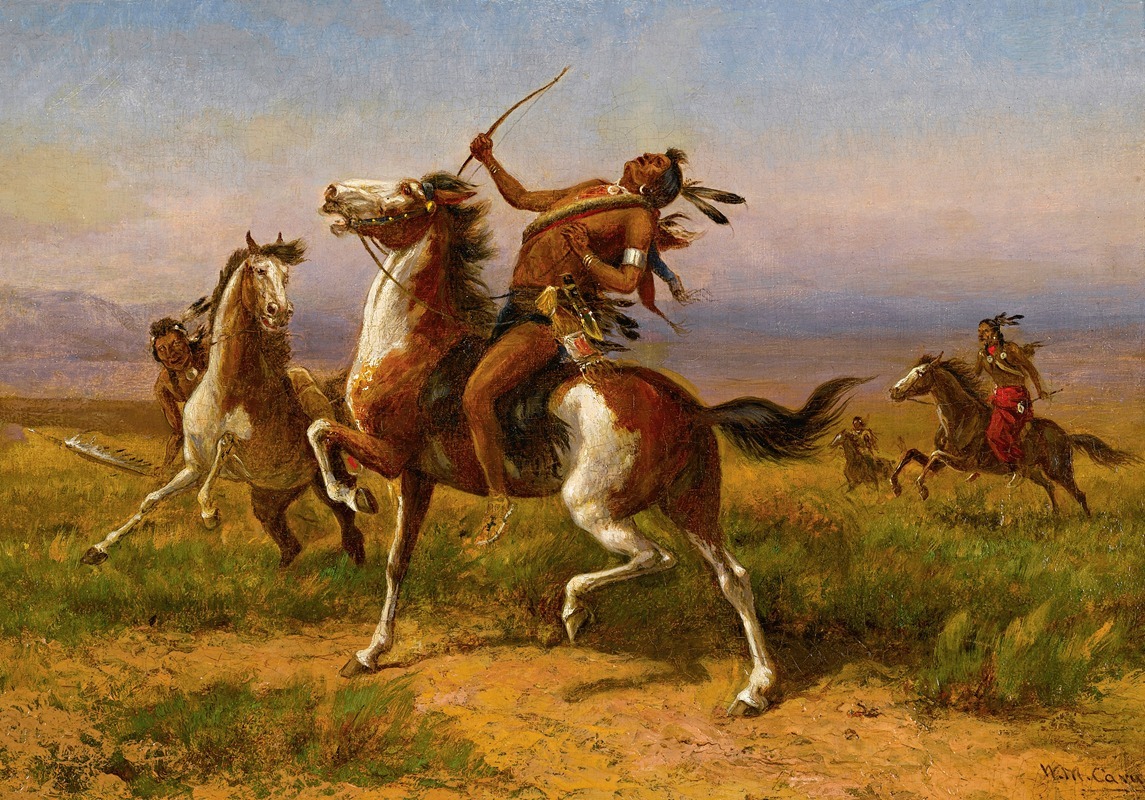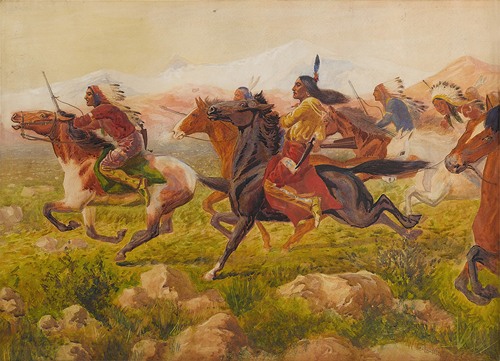
Born in Tappan, New York, most of William de la Montagne Cary’s early life was spent in Greenwich Village. As a teenager he was contributing illustrations to such magazine’s as Harper’s Weekly, Leslie’s, and Appleton’s. He worked in oil, watercolor, pen and ink, black and white wash, and in later years did some seventy wood engraving illustrations for five of the popular books of the day, in addition to etchings on copper plates for Currier and Ives and other publishers.
In 1861 when he was 21 years old, Cary made his first trip to the West, accompanied by two friends. Traveling by ox-wagon, steamboat, and stagecoach, he went to St. Louis, Fort Union, Fort Benton, across the Rockies to Walla Walla, south to San Francisco, and eventually returned to New York by way of Panama. This journey was an important turning point in his life, for the adventure and excitement he encountered inspired him to spend the next 50 years painting scenes of Indian and pioneer life.
Cary made another trip to the west in 1874 and this, too, resulted in innumerable sketches and paintings. Even though his home remained in New York, life on the frontier was the subject he chose to depict. His son, Clinton Cary, recalled that in later years at their New York home, a young neighbor, Teddy Roosevelt, would frequently come over to listen to Cary’s stories about Western life.
On his travels he often drew famous leaders of the Plains from life, among them Buffalo Bill, Custer, Sitting Bull, and Rain-in-the-face. Having a sharp eye for the unusual, he nevertheless executed his canvases with such careful attention to realistic detail that they came to be regarded as important historical documents. Perhaps his most important contribution was his portrayal of Plains Indian customs and ceremonies.
William de la Montagne Cary died at the age of eighty-one in Brookline, Massachusetts.



